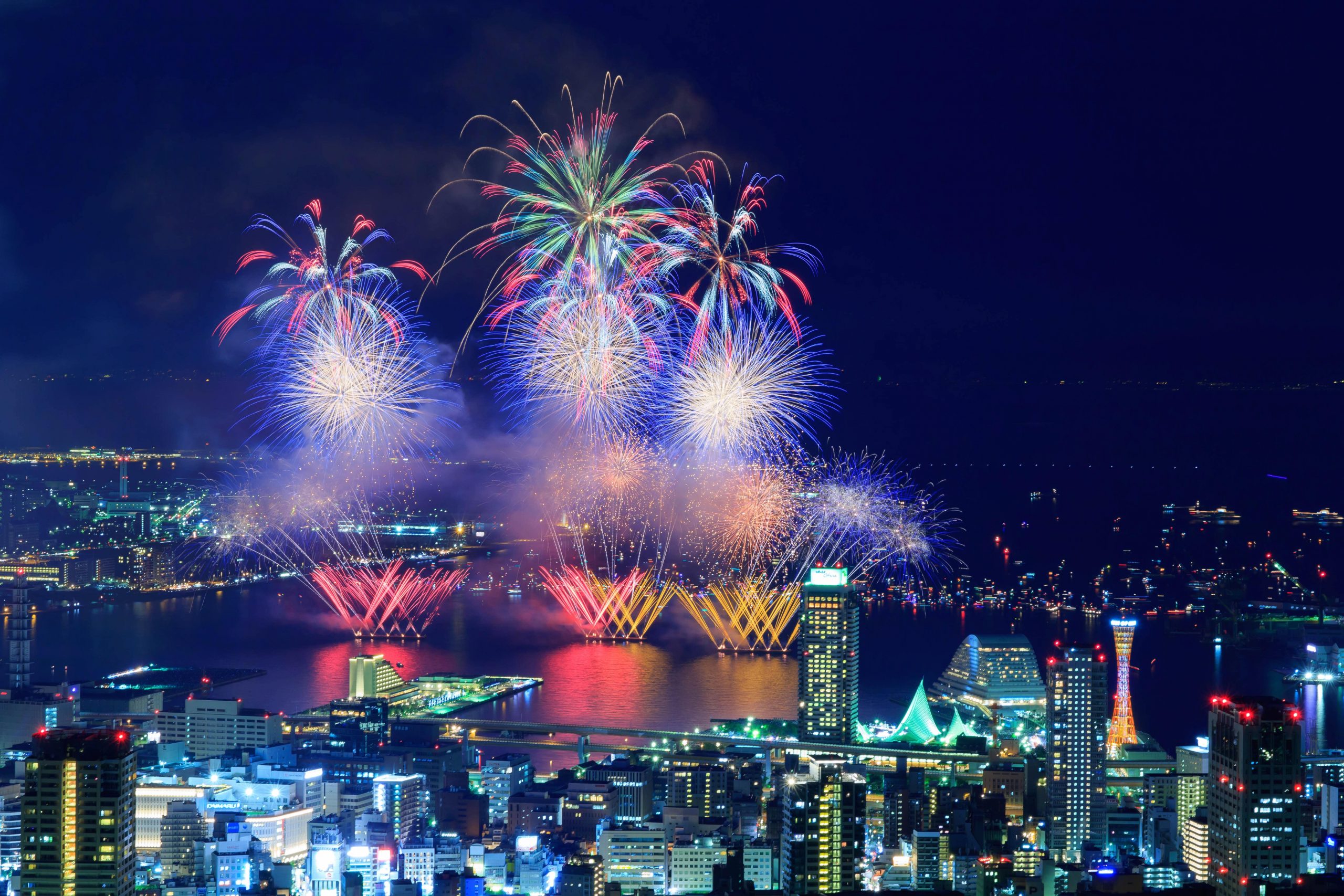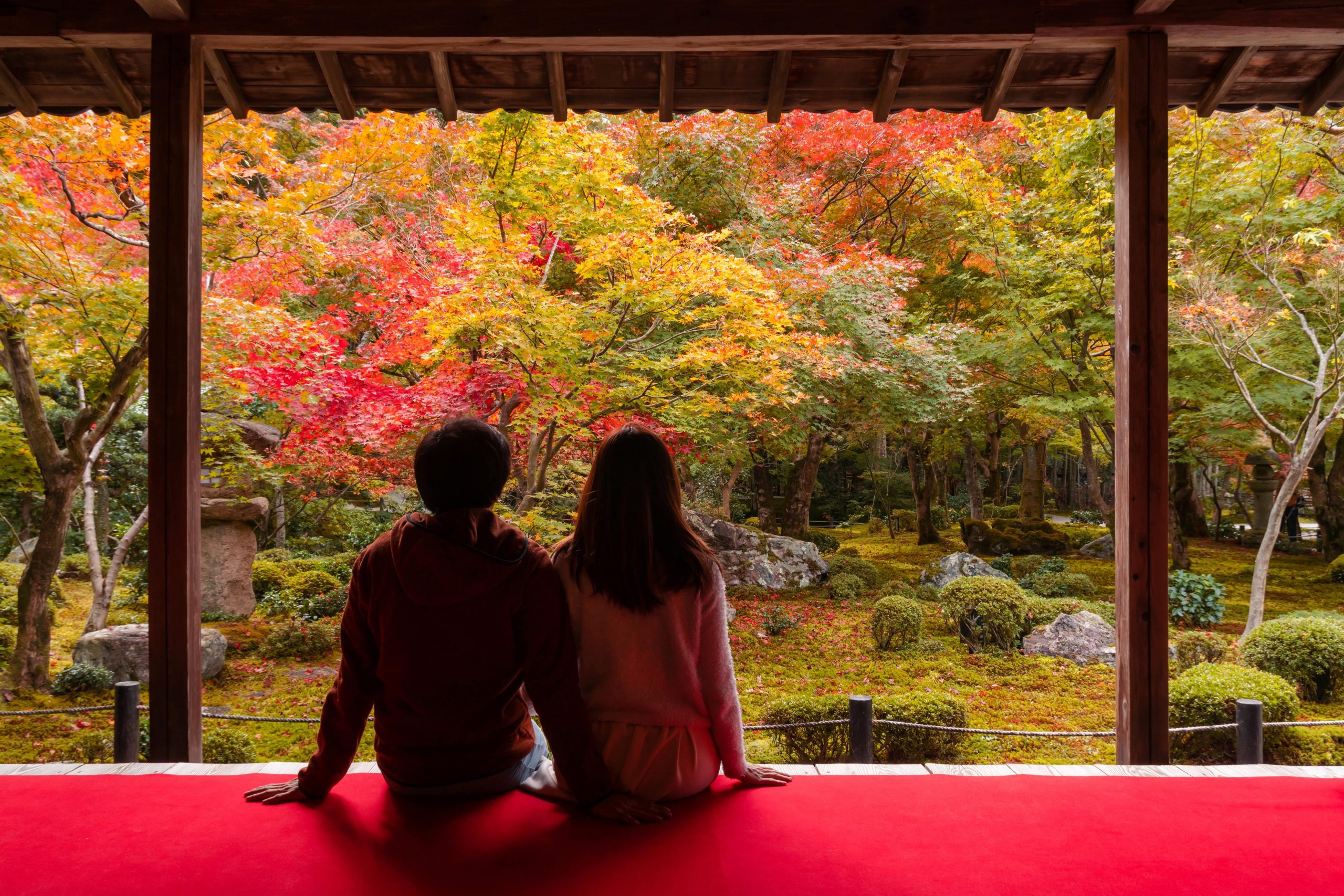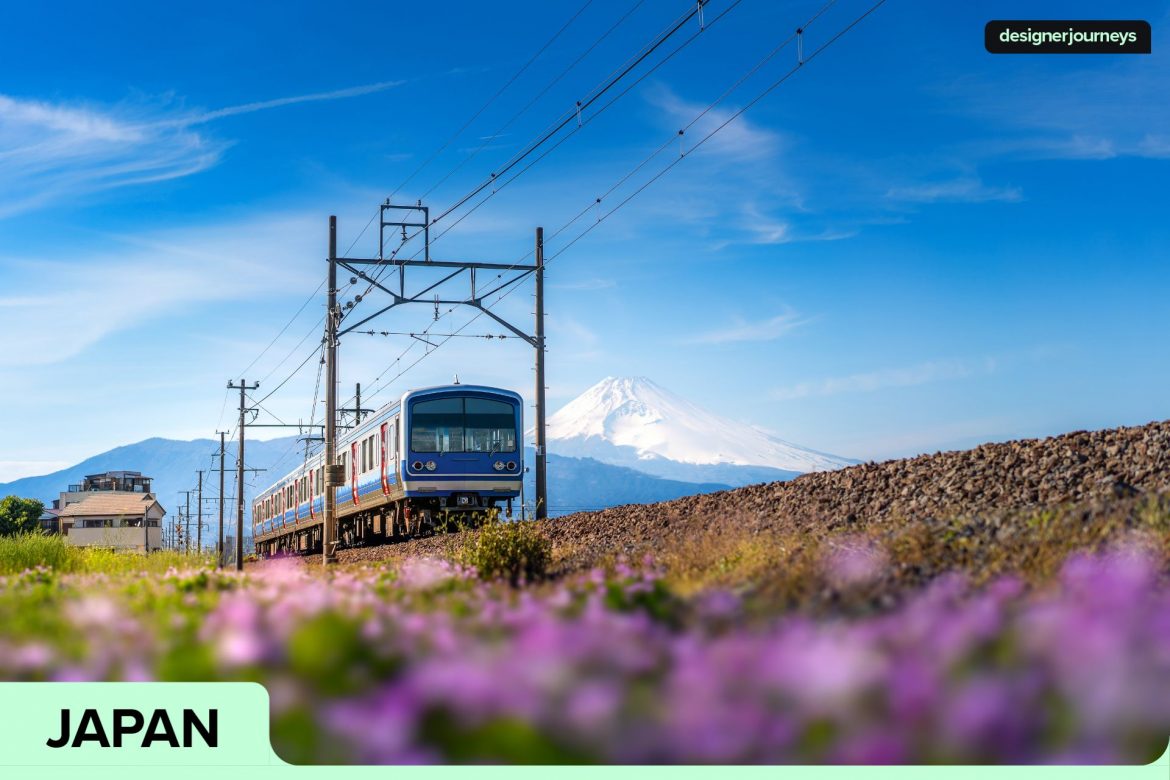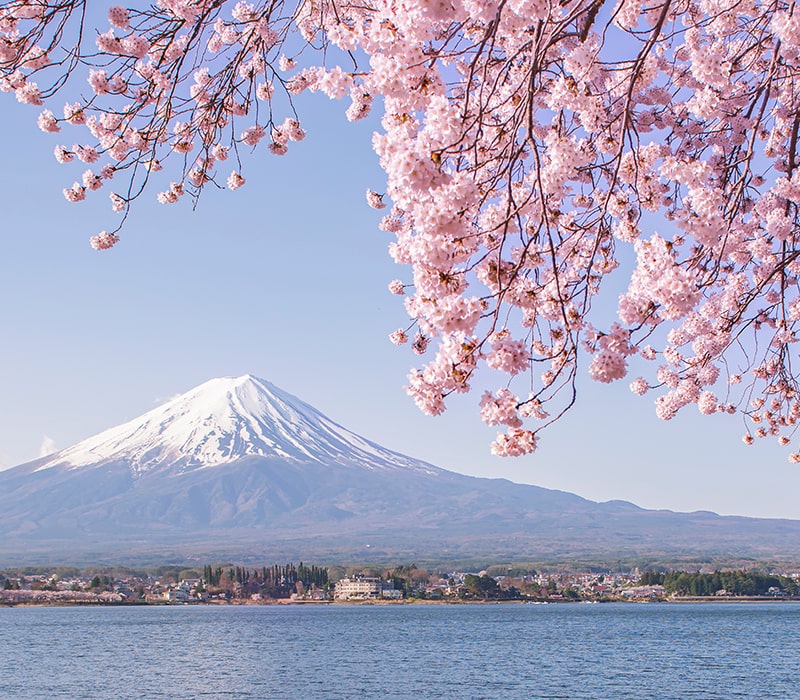Japan is an island nation that’s made for dream trips—where every season brings a new reason to visit, and each journey can be as unique as you imagine. For travellers, choosing the best season to visit Japan isn’t just about weather; it’s about crafting an experience around cherry blossom viewing, traditional events, and the pleasures of mild temperatures or winter magic. Let’s explore when to visit Japan and why each season reveals a different side of this attractive destination. Together, we’ll uncover the best time to travel to Japan and insider tips for a seamless, personal, and unforgettable journey. Let’s dive in!
Post Contents
- Spring in Japan: Cherry Blossoms, Pleasant Weather, and Festivals
- Summer in Japan: Festivals, Beach Vacations, and Mountain Retreats
- Autumn in Japan: Autumn Leaves, Cool Weather, and Tranquil Temples
- Winter in Japan: Snow, Skiing, and Hot Springs
- When Is the Best Time to Travel to Japan?
- Expert Tips: How to Design Your Seamless, Personal Journey
- F.A.Qs
- Book Your Crafted Journey: Discover Japan With Confidence
Spring in Japan: Cherry Blossoms, Pleasant Weather, and Festivals
When: Late March – Early May
Spring is Japan’s most iconic season, famous worldwide for cherry blossoms in full bloom. The first hint of pink arrives in the southern regions in late March and sweeps northward, reaching northern Japan by mid-April to early May. This fleeting period is the peak season for both domestic travellers and international visitors, who flock to prime sightseeing spots like Ueno Park, Osaka Castle, and Kyoto’s famous gardens.
Spring is Japan’s most iconic season with cherry blossom.
Cherry blossom season is more than just beautiful scenery—it’s a national event. The Japanese people celebrate hanami, or cherry blossom viewing, with picnics under the blossoms, sharing food and drinks with friends and family. These moments of connection, joy, and appreciation for fleeting beauty are at the heart of spring.
Best Places for Cherry Blossoms and Flower Viewing
Ueno Park (Tokyo):
In early April, Ueno Park becomes Tokyo’s most popular spot for hanami. Arrive during the first week of April to catch the cherry trees in full bloom, but be prepared for festive crowds and a lively local atmosphere.
Osaka Castle:
The castle grounds are filled with cherry blossoms from late March to mid-April, creating postcard-perfect scenes for photos and relaxation.
Kyoto’s Gardens and Temples:
Visit Kyoto in early April for tranquil flower viewing at gardens like Kiyomizu-dera or Maruyama Park. Early mornings offer fewer crowds and a more personal connection with the landscape.
Northern Japan (e.g., Sapporo):
In northern regions, cherry blossom season arrives later—aim for late April to early May for a chance to enjoy full bloom with fewer domestic travellers.
Insider Tip:
Japanese travel during cherry blossom season is all about timing. Watch the weather forecast, as the exact week for full bloom changes every year. For a seamless experience, book your hotels, bullet train tickets, and local guides well in advance—especially for popular spots like Tokyo, Kyoto, and Osaka.”
Events and Travel Considerations
Golden Week:
From late April to early May, Japan celebrates Golden Week—a series of four national holidays in a single week. This is one of the busiest times to visit Japan, with crowded tourist attractions, packed bullet trains, and higher accommodation prices. But with expert support, you can still discover quieter gardens and hidden gems away from the crowds.
Weather:
Spring weather is generally mild, with sunny days and cool evenings. Pack layers and a light jacket for pleasant weather throughout your trip.
Crowds and Costs:
As the peak season for tourism, spring brings higher prices and more visitors. For lower prices and fewer crowds, consider early March or the second half of May, after cherry blossom season ends.
Summer in Japan: Festivals, Beach Vacations, and Mountain Retreats
When: June – Late August
Summer in Japan is a tale of two seasons. The month of June marks the rainy season (tsuyu)—a time of frequent showers that brings life to the countryside. This early summer period is less popular for travel, but it offers lush scenery and lower prices for those who don’t mind a little rain.

Beautiful fireworks at summer night in Japan.
By mid-July, the rain ends, giving way to sunny days, vibrant festivals, and the full warmth of summer. It’s the perfect season for outdoor adventure, beach vacations, and immersing yourself in Japan’s rich tradition of matsuri (festivals).
Top Summer Experiences
Beach Vacation in Okinawa and Southern Japan:
Japan’s islands boast beautiful beaches and clear waters—ideal for relaxing, swimming, and snorkelling. The best time for a beach vacation is from mid-July to late August, before typhoon season peaks.
Japanese Alps:
If you want mild temperatures and fresh mountain air, the Japanese Alps offer hiking, scenic train journeys, and fewer crowds. Visit during the summer months to escape the city heat.
Festivals and Fireworks:
Summer is festival season in Japan. From local Bon Odori dances to dazzling fireworks, every region celebrates with unique traditional events. Sensoji Temple in Tokyo and local shrines across the country come alive with colour and music.
Urban Sights:
Visit Tokyo or Kyoto in early July or late August to enjoy outdoor attractions before and after the peak holiday season.
Insider Tip:
Plan your summer trip around local festivals for an unforgettable experience. The atmosphere is electric, and you’ll experience the creativity and community spirit of the Japanese people. For a crafted escape, pair your festival days with time in the Japanese Alps or a beach resort.
Weather and Challenges
- Rainy Season:Expect frequent showers in June and early July. The rain makes gardens and forests especially beautiful, and you’ll find lower prices at hotels.
- Hot, Humid Summer:From mid-July to late August, cities like Tokyo and Osaka can be hot and humid. If you prefer cooler weather, travel to higher elevations or northern regions.
- Typhoon Season:Japan’s typhoon season runs from late August through September, mainly affecting southern and coastal areas. Always check the weather forecast when planning beach vacations during this time.
- Obon Holiday (Mid-August):Obon is a holiday season when many Japanese travel to their hometowns. Tourist spots, bullet trains, and hotels can be crowded in the first half of August, so aim for late August or early July if you want fewer crowds.
Autumn in Japan: Autumn Leaves, Cool Weather, and Tranquil Temples
When: Mid-September – Late November
Autumn is Japan’s best season for lovers of colour and tranquillity. As the heat fades in mid-September, the northern regions and Japanese Alps turn into a wonderland of red and gold. From late October to the last week of November, autumn leaves peak across the country.

Autumn in Japan.
Best Places to See Autumn Leaves
Sensoji Temple (Tokyo):
The temple grounds are breathtaking in late October, with fiery leaves and pleasant weather for exploration.
Japanese Alps:
The mountains burst with colour from late September, offering world-class hiking, sightseeing, and fewer crowds.
Japan’s Gardens:
Visit iconic gardens like Rikugien (Tokyo), Kenrokuen (Kanazawa), and Korakuen (Okayama) to experience autumn leaves at their peak.
Ueno Park (Tokyo):
A favourite spot for both cherry blossom season and autumn foliage, Ueno Park glows with colour in early November.
Insider Tip:
Autumn is the secret jewel of Japanese travel. Visit Kyoto or the Japanese Alps in the last week of October for fewer crowds and stunning scenery. Track the weather forecast to catch peak colour, as timing can shift by region and elevation.
Cultural Events and Travel Advice
- Traditional Festivals: Autumn is rich with local festivals, food fairs, and harvest celebrations. Enjoy culinary delights like roasted chestnuts, sweet potatoes, and fresh seafood.
- Silver Week: Some years, mid-September features a string of national holidays called Silver Week. This is a crowded time for domestic travellers, so plan ahead if visiting popular sightseeing spots.
- Weather: Autumn brings mild temperatures, sunny days, and little rain—perfect for outdoor adventures.
- Costs and Bookings: While not as busy as cherry blossom season, autumn’s best regions still attract many visitors. Book luxury hotels or boutique ryokans early to secure your place during peak colour.
Winter in Japan: Snow, Skiing, and Hot Springs
When: Late December – Early March
Winter in Japan is magical, especially in the northern regions and mountain areas. From late December to early March, the country offers a crafted blend of world-class skiing, traditional hot springs, and festive events.

Obanazawa Ginzan Onsen in Winter.
Top Winter Experiences
Sapporo Snow Festival (Early February):
One of Japan’s most celebrated traditional events, the Sapporo Snow Festival transforms the city with giant ice sculptures and a lively winter atmosphere. The first week of February is the best time to visit for this festival.
Japanese Alps and Ski Resorts:
The Japanese Alps in Nagano and Niigata offer powdery slopes, luxury lodges, and seamless access by bullet train. January is peak season for skiing, attracting travellers from across the globe.
Hot Springs (Onsen):
There’s nothing like soaking in a steaming onsen surrounded by snowy landscapes. Visit Hakone, Yufuin, or northern hot springs in Hokkaido and Tohoku for the ultimate winter retreat.
Holiday Season:
The New Year (Shogatsu) is Japan’s biggest holiday. Temples and shrines fill with visitors, and the festive spirit is everywhere. For a quieter experience, travel in late January or early February.
Insider Tip:
To get the most out of your winter trip, use the bullet train to reach northern Japan and ski resorts quickly. Book your accommodations early, especially for the Sapporo Snow Festival or popular onsen. Winter is also a great time for fewer crowds at urban tourist spots.
Weather and Planning
- Snow and Cold: The northern regions and the Japanese Alps are covered in snow and cold, making them ideal for skiing and snowboarding. Southern cities like Tokyo and Osaka have milder winters, making for comfortable sightseeing.
- Lower Prices and Fewer Crowds: Outside of major festivals and the holiday season, winter brings lower prices and a more relaxed pace to many attractions.
When Is the Best Time to Travel to Japan?
Japan truly has four seasons, each offering its own character and charm. The best season to visit depends on what you want to discover:
- Spring (Late March–Early May): For cherry blossom viewing, outdoor attractions, and mild temperatures.
- Summer (June–Late August): For festivals, beach vacations, mountain escapes, and sunny days (with a rainy season in June and typhoon season in late August to mid-September).
- Autumn (Mid-September–Late November): For autumn leaves, pleasant weather, and cultural festivals.
- Winter (Late December–Early March): For snow, hot springs, fewer crowds, and holiday season magic.
Each season brings different experiences to major tourist spots like Ueno Park, Osaka Castle, Sensoji Temple, the Japanese Alps, and Japan’s gardens. Domestic travellers and international visitors alike plan their journeys around these two seasons of blossoms and autumn leaves, but every month has something special to offer.
Expert Tips: How to Design Your Seamless, Personal Journey
- Use the Weather Forecast:The timing of cherry blossoms and autumn leaves changes yearly. Japanese people watch the forecast closely—so should you!
- Book Early for Peak Season:For cherry blossom season, Golden Week, and autumn leaves, reserve hotels, trains, and guides as soon as possible.
- Consider the First Week or Last Week of a Season:Arriving in the early or late part of a peak season often means fewer crowds and a more personal experience.
- Explore Lesser-Known Regions:Northern Japan, the Japanese Alps, and smaller towns offer unique festivals and traditions with fewer tourists.
- Balance Popular and Hidden Sightseeing Spots:Mix famous sights like Ueno Park, Osaka Castle, and Sensoji Temple with tranquil gardens and rural adventures.
F.A.Qs
What are the best months to visit Japan?
The best months to visit Japan are late March to early April for cherry blossoms, and late October to early November for autumn leaves. Both offer pleasant weather, beautiful scenery, and vibrant cultural events. Spring and autumn are ideal for sightseeing, outdoor attractions, and experiencing traditional festivals.
Is $5000 enough for a trip to Japan?
Yes, $5000 is enough for a comfortable trip to Japan, especially if you plan and book in advance. This budget covers flights, upscale accommodation, dining, transportation, and entrance to most major tourist attractions for a 7–10 day journey.
What month is the cheapest to travel to Japan?
The cheapest months to travel to Japan are January (after the New Year holiday), February, and June (rainy season). During these times, you’ll find lower prices on flights and hotels, fewer crowds at tourist spots, and better deals on luxury experiences.
What is the least popular time to go to Japan?
The least popular time is during the rainy season (June) and the hottest summer weeks in late July and August. These periods see fewer international visitors, so attractions are less crowded and prices are often lower.
Book Your Crafted Journey: Discover Japan With Confidence
Designing your perfect time to visit Japan means more than just watching the weather forecast—it’s about uncovering local insight, planning around national holidays, and creating moments you’ll remember forever. Whether you seek the magic of cherry blossoms in early April, the thrill of the Sapporo Snow Festival, the calm of hot springs in January, or the colours of autumn leaves in late October, we’re here to provide expert support and seamless experiences.
Ready to imagine your dream trip? Trust Designer Journeys to help you discover, explore, and book your personal adventure across Japan’s four seasons—with confidence, care, and a crafted touch.





